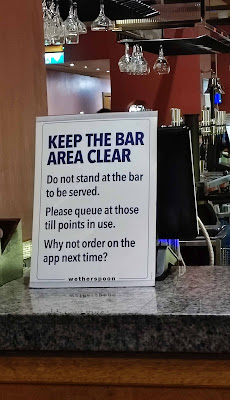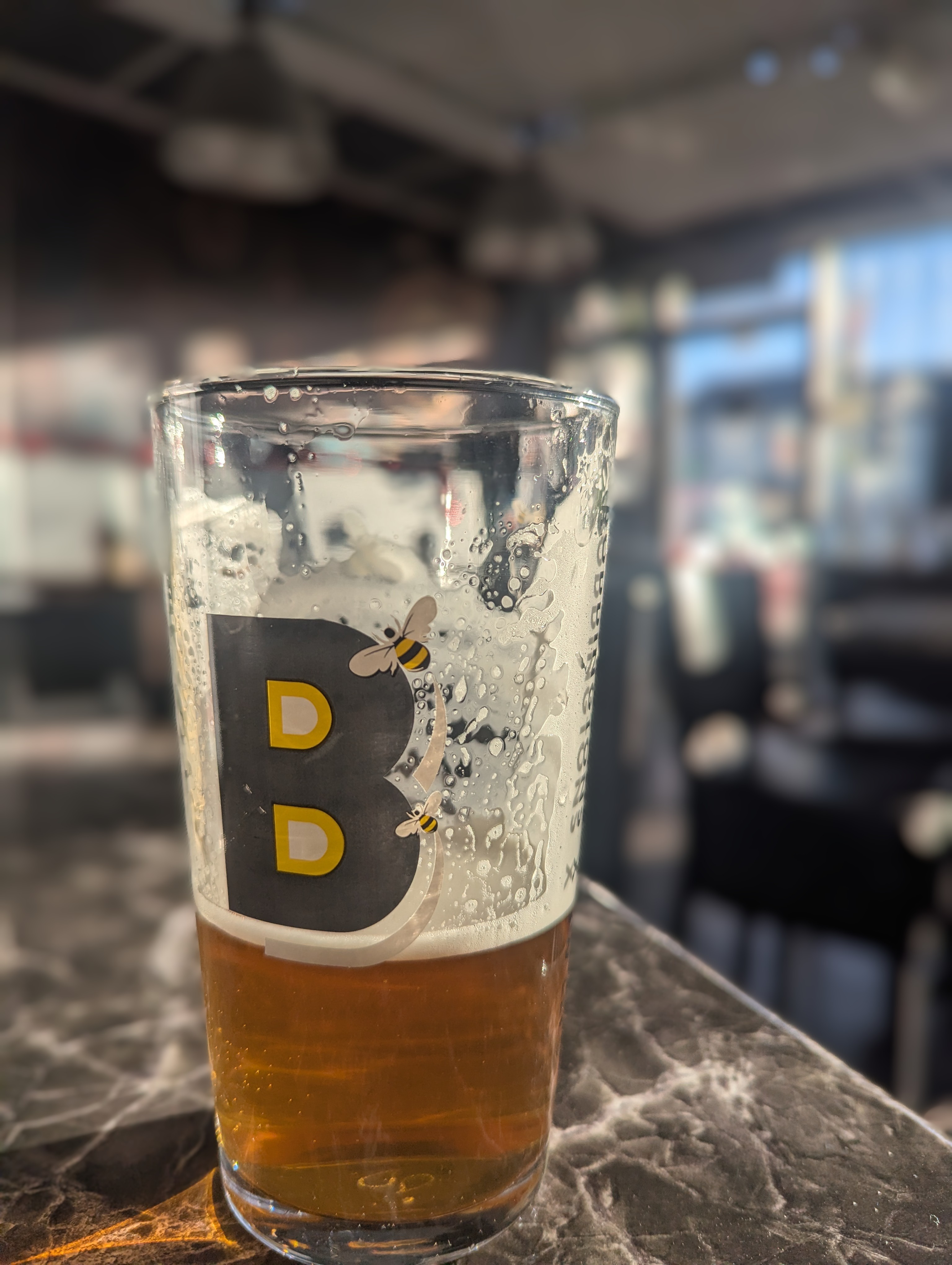Allegedly, at least, the title of this piece is what your typical Yorkshire native might say, when encountering a price which is unexpectedly high. (Elsewhere, in this sceptred isle, assuming you are British, a gently raised eyebrow would most likely suffice.)
I was in London for a few days recently and promised I'd keep a close eye on prices. Nowadays, this is fairly easy to do, as in London, and increasingly elsewhere, the default is for the server to tap some numbers into a machine, barely, if ever tell you what the damage is, and hand it to you in the expectation that you will just swipe your card. Now, I do like to have the odd glance at the figures, but I can scarcely remember saying "Oi Mate - are you going to tell me the price?" It seems likely then, I'm as docile as the next man, and end up just swiping and hoping for the best. A worrying trend if you ask me, but I digress as at least when you look at your bank statement, the truth is there for you to consider somewhat ruefully.Prices of course vary, and here, as you can imagine, I'm talking about prices in pubs. Oddly, though, prices of beer, as often as not, aren't clear as you'd hope. It is not at all uncommon - yes, I'm looking at you Stonegate as a main culprit - to list the price of everything but beer on table menus. Is beer pricing so volatile that it can't be committed to print? I'd have thought not, so what could the reason be for this omission? There are laws of course about displaying prices, though I think these are rather loosely complied with generally and for sure can't be relied on, though again this varies and in most of the places I go to, the prices are out in the open, but when you go of piste, rather less so.
So given that London is a bit different, what would be an average price for our usual round, which is a pint for me and a half for E. In my case, unless I know the place well, or I'm just feeling wreckless, it will be lager for both of us. That will vary too, but in the Euston, Farringdon and Aldgate taps, a decent German lager - say Schneider, Ayinger and the like will be around the £6.20 mark with Rothaus about £6.50. I have to say, that given the quality here, these are pretty fair prices, as you can easily pay more for Camden Hells or Brixton Lager, which certainly haven't come very far, and in quality terms, to this writer at least, lag considerably behind. Additionally, prices are clearly displayed, which is as it should be.
What of cask? Well, I did have some superb cask in the Sutton Arms. I think my pints of Torrside were in the region of £5.70, as a pint of said beer and a half of Paulaner Lager for E was a reasonable £8.65. Given the quality of the beer, I had no complaints at all. In the Waterloo Tap, en route to a do in Hampton Court, I had two excellent pints of mild from Redemption, while E had Schneider Helles for a reasonable £7.30 the pair. Not bad at all. In Hampton Court, in the Prince of Wales, a rather indifferent pint of Triple fff Moondance - a former Champion Beer of Britain no less - and a half of Spanish lager was £8.50, but we rather enjoyed the pub and all the rather posh denizens thereof, so that was fine. We were also soothed by the fact we were going to a function with a free bar at the birthday party we were attending.Into each life, a little rain must fall, though. Following a (very) late train from our evening out, we lurched into the Minories pub, which remains open after midnight but was pretty well deserted. £11.55 for a pint and a half of Camden Hells was somewhat shocking, especially when served in a floppy plastic beaker. This is a Stonehouse pub, which had many beers on, but no prices listed in the printed menu. (None of the other drinks seemed outrageous, though, so that's odd.)
So, is London particularly pricey? Well, on balance, given the higher overheads, probably not. You do have to pick and choose carefully to get the quality you want at a price that you are prepared to pay though. Overall the same round bought in Manchester might be a couple of pounds or so less, and in Rochdale, probably over £3 less, but is that really so outrageous?
As always, you pays your money and you takes your choice, though in London, you'd be well advised to put your choice into the equation first.
You will see I am a fan of the various Taps owned by Bloomsbury Leisure. Rightly so, in my view. They are currently developing on at Manchester Victoria and of course, already have the Piccadilly Tap.
I was told at the Minories, it was a police instruction to have plastic, following an incident earlier in the week with over exuberant West Ham fans. Shame, and hopefully temporary. Stonegate also operate the Dog and Truck near our London flat. Same price problem with beer.






























